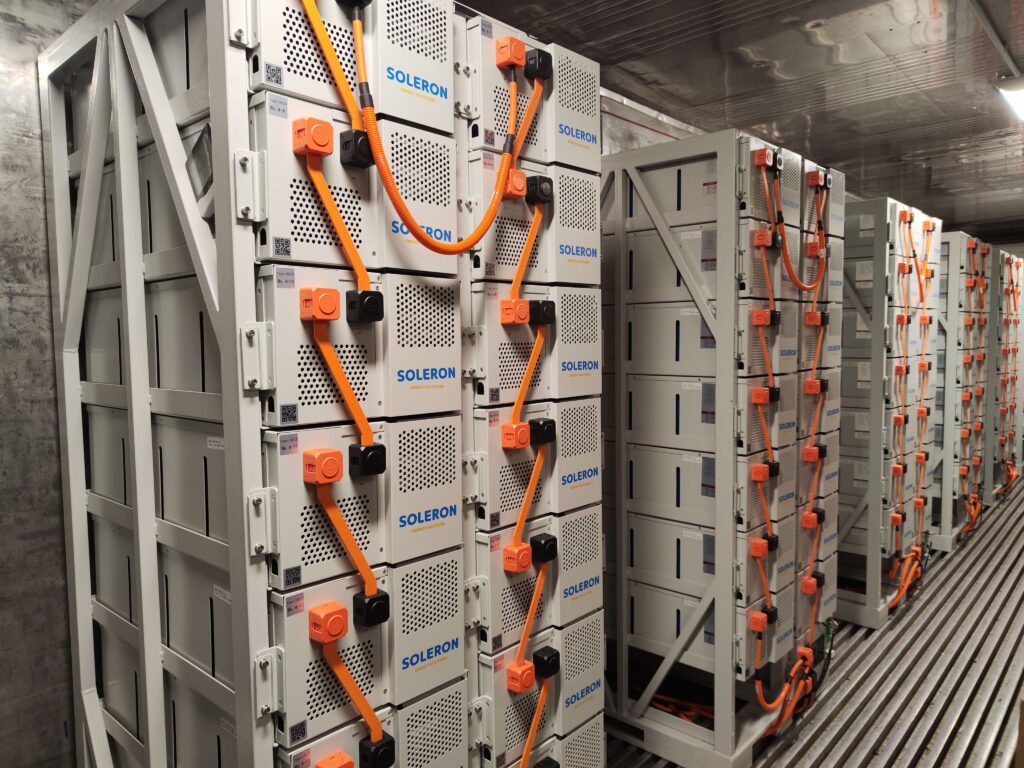a) If there is no possibility to connect to the power grid or it is unreasonably expensive, then an off-grid solution is the only option. In this case, the system must include production capacity (wind turbines or solar panels), a storage unit, and a generator. The investment in such a system has decreased significantly in recent years, and its profitability can be assessed based on the alternative cost, i.e., how much connecting to the power grid costs and whether it is even possible.
b) If the connection is at the far end of the power line and the voltage fluctuates or power outages occur frequently. Adding storage to the system improves the quality of electricity and increases capacity without purchasing additional amperes. In this case, the primary purpose of acquiring storage is supply security. The alternative cost includes the additional expense required for purchasing more amperes and the costs associated with power outages.
c) A solar power plant is built at the consumption site, but the production and consumption times do not coincide. During sunny periods, the electricity market price is low, and consumption is low, which means electricity cannot be consumed, and selling to the grid is not profitable. Adding storage allows capturing peak prices, and with sufficient capacity, it is possible to consume only self-produced electricity during sunny periods and sell the surplus to the grid. During winter, when panels are covered with snow and there is no electricity production, it is possible to buy electricity from the grid at a lower price and consume it during high-price periods. It is also possible to sell electricity back to the grid at a better price. An additional opportunity for revenue is the frequency reserve market, where smaller production units are aggregated and offered as regulation services required for maintaining frequency.
d) Large solar farms not associated with consumption are mostly initially built as non-controllable. This means the farm produces when solar radiation falls on the panels. There are already more than 1,000 MW of such farms in Estonia, and more are being added. As is known, some farms receive renewable energy support of €53/MWh, some receive support under the auction system, and some have no support. Managing such farms is simple: when the price is zero or negative, the choice is either to pay for delivering electricity to the grid or to shut down the farm’s production (this condition does not apply to farms supported under the auction system). Adding storage would make such farms at least partially controllable, meaning that during periods of negative prices, the energy produced can be stored in batteries and sold to the market when prices are better. When adding storage, it is necessary to decide on the optimal capacity and how to manage the storage. Investment decision-making is made complex by the fact that we do not know what the electricity price will be in the coming years and how many negative price hours there will be during sunny and windy periods.
The above situations are, in general, the main cases where adding storage should be considered.
Now back to the question of whether acquiring storage is worth it. Based on simulations conducted using the actual production and consumption data of several clients in 2023 and 2024, we have concluded that the key question is smart storage management and the optimal use of various earning opportunities. Simulations based on the electricity consumption data of approximately 30 clients show that if storage is added to a solar power plant and managed against the NordPool spot price (arbitrage), the payback period is approximately 9–11 years. There is a correlation that the more self-produced electricity is used on-site, the shorter the payback period. The payback is also influenced by the number of negative price hours and the volatility of electricity prices.
Another opportunity for earning revenue with storage is the frequency reserve market, which includes various products – mFRR, aFRR, and FCR (read more about the functioning of the frequency reserve market here). Until the BRELL synchronous area is exited, our electricity grid frequency is maintained by Russia, but after joining the European synchronous area, Estonia, Latvia, and Lithuania will have to manage it independently. Currently, Elering purchases mFRR products from the regulation market to maintain frequency on a limited scale, but we predict that the need for frequency reserves will increase significantly after desynchronization. Simulations show that even in the current CoBa market, it would have been possible to achieve a payback period of 3–4 years with optimal storage usage. Of course, the profitability of the investment still depends on many factors, the most important of which are the size of the investment, operating costs, storage reliability, smart management, market access opportunities, and trading strategy. In a free market, prices are shaped by supply and demand. It is still too early to predict what the demand will be and how quickly the supply will catch up. Therefore, everyone must assess the opportunities and risks themselves and make an informed decision.





